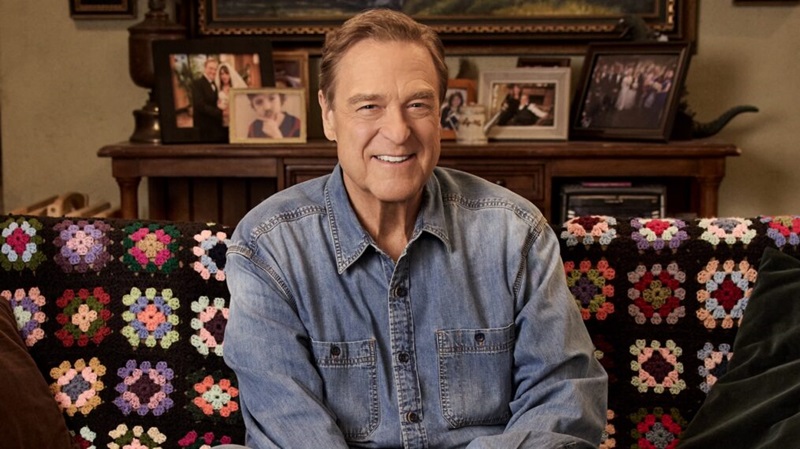John Goodman’s career is a testament to his breadth of talent and versatility in the entertainment industry. Hailing from Missouri, he moved to New York in the late 1970s, where he embarked on his acting journey on stage. His big break came in 1988 when he was cast in the popular television sitcom «Roseanne,» where he portrayed the lovable Dan Conner for nearly a decade. This role earned him a Golden Globe Award and solidified his position as a household name in Hollywood.
In addition to his success on the small screen, Goodman has had an extensive career in film. His collaborations with the Coen Brothers, such as the darkly comic «The Big Lebowski» and the critically acclaimed «O Brother, Where Art Thou?» showcased his range as an actor, capable of delivering comedic and dramatic performances with equal proficiency.
However, Goodman’s talent extends beyond comedy and drama. He has lent his distinctive voice to numerous animated films, most notably as the booming, lovable Sulley in Pixar’s «Monsters, Inc.» and its sequel. His voice acting work has further solidified his place in the industry, making him a recognizable figure in both live-action and animated cinema.
Throughout his career, Goodman has shown that he is not one to be easily typecast. From his role as a blue-collar family man in «Roseanne» to a volatile Vietnam veteran in «The Big Lebowski,» and even a prehistoric patriarch in the animated series «The Flintstones,» Goodman has continually displayed his ability to adapt to a broad range of characters.
Goodman’s talents extend to the stage as well. He has appeared in various Broadway productions, such as the revival of «Waiting for Godot» and «The Front Page,» further proving his versatility as an actor. His performances often garnering critical acclaim, showing his strength in delivering powerful performances across multiple mediums.
Despite his success, Goodman remains humble and dedicated to his craft. He is known for his professionalism and work ethic, frequently praised by directors and co-stars for his commitment to each role. His longevity in the challenging world of entertainment is a testament to his talent, dedication, and adaptability.
In recent years, Goodman has continued to work in both television and film. He reprised his role as Dan Conner in the «Roseanne» reboot and subsequent spin-off «The Conners,» and has had roles in films such as «10 Cloverfield Lane» and «The Gambler.» Regardless of the platform, his performances continue to resonate with audiences, affirming his status as a beloved figure in the entertainment industry.
John Goodman’s career is a comprehensive illustration of talent, versatility, and longevity in the entertainment industry. From his early stage performances to his iconic television and film roles, and his voice work in beloved animated films, Goodman has left an indelible mark on the industry. His body of work is not just a testament to his talent, but also to his ability to captivate audiences in a variety of roles across multiple genres and mediums. As he continues to entertain audiences worldwide, one can only anticipate the further contributions he will make to the industry.

Defining Moments in Film and Television
Defining moments in the realm of film and television are milestones that have significantly influenced the course of the industry. These moments offer a unique perspective on the evolution of filmmaking and broadcasting, and the cultural implications that come with it. A defining moment could be an innovative technique, a groundbreaking performance, or a narrative that challenges societal norms, thus becoming a catalyst for change and inspiring future creations.
For instance, the transition from silent films to «talkies» in the late 1920s was a defining moment that revolutionized the film industry by adding a new dimension to storytelling. Similarly, the introduction of color in film brought productions to life and expanded the creative possibilities for filmmakers.
In television, the advent of reality TV in the late 90s, with shows like «Survivor,» introduced a new genre that has since dominated the television landscape. This defining moment redefined viewer expectations and engagement, by blurring the line between fiction and reality.
Moreover, the representation and visibility of diverse stories and characters have been significant defining moments in film and television. For example, the airing of «Ellen,» where the lead character came out as gay, or the release of «Black Panther,» a superhero film with a predominantly black cast, have marked turning points in the industry. These instances have not only broadened the narrative scope but also made the medium more inclusive and reflective of our diverse society.
In recent years, the rise of streaming platforms like Netflix and Amazon Prime has been a defining moment, disrupting traditional broadcasting models and reshaping the way we consume film and television.
In conclusion, defining moments in film and television are seminal instances that precipitate change, spark innovation, and reflect societal shifts. They are essential for understanding the evolution of the medium and its impact on society.
Versatility Across Genres
Versatility across genres is a highly valued trait amongst artists, writers, and performers, often marking the difference between fleeting success and long-term prominence in their respective fields. This versatility suggests an adaptability and openness to exploration that not only allows for an expansive range of creative expression, but also broadens the audience base, as it caters to a variety of tastes and preferences.
For instance, a musician who can seamlessly transition from jazz to rock, or a novelist who skillfully crafts both romance and mystery novels, exhibits versatility across genres. This trait is particularly pertinent in the ever-evolving world of entertainment and arts, where the lines between genres are increasingly blurred and the audience’s demand for novelty and freshness is ever-present. Versatility across genres also implies a certain level of mastery and understanding of various styles and forms, reflecting an artist’s commitment to their craft and their willingness to venture beyond their comfort zone.
However, it’s not just about switching between genres for the sake of it; it’s about bringing a unique perspective and voice to each genre, thereby enriching it. Such versatility can foster innovation and push the boundaries of artistic expression, making it a worthwhile pursuit for any artist. At the same time, it can pose a challenge, as it requires a delicate balance between staying true to the essence of each genre and maintaining a distinct artistic identity. Nevertheless, versatility across genres can be a powerful tool in an artist’s arsenal, enabling them to leave their mark on a variety of platforms and connect with a diverse audience.

Behind the Scenes: Producing and Voice Work
Behind the Scenes: Producing and Voice Work involves a multitude of tasks that most audiences are unaware of when they enjoy a film, television show, or animated feature. It begins with the producers, the individuals responsible for coordinating, supervising, and controlling matters such as fundraising, hiring key personnel, and arranging for distributors. The producers are the ones that bring the creative vision of a project to life, from concept to completion. They are often involved in script editing, casting, and even marketing.
In the realm of voice work, the process becomes even more intricate. Voice actors, distinct from on-screen actors, are required to express emotions and convey a character’s personality through their voice alone. This requires an exceptional level of skill and talent. They often work in studios with high-quality equipment to ensure that every nuance of their performance is captured. Their work is vital in animated films, video games, and dubbed foreign language films.
In addition, there is a team of audio engineers and sound editors who work on the recorded voices. They adjust the pitch, tone, and speed of the voices to match the characters and the scenario. They also add in sound effects and background sounds to create a fully immersive audio experience.
Behind the scenes, there are also scriptwriters, directors, animators, and many more professionals who contribute to the production. The process is often long and involves meticulous detail, creativity, teamwork, and often requires multiple revisions to achieve the perfect end product.
All of these elements combined create the entertainment that audiences around the world enjoy. Despite the challenges and the complexity of the process, the satisfaction of creating compelling content is a reward that drives these professionals in the field of producing and voice work.

Recent Projects and Future Endeavors
Recently, there has been a surge in novel projects across various fields, demonstrating the incessant dedication to innovation and development. These projects have centered around multiple domains, such as technology, environmental sustainability, healthcare, and education. For instance, in technology, we have seen an influx of initiatives aimed at enhancing artificial intelligence, blockchain technologies, and virtual reality. Concurrently, in the environmental sector, numerous projects have been initiated to tackle climate change, promote renewable energy, and address pollution.
Going forward, future endeavors promise even greater advancements and breakthroughs. In the realm of space exploration, for instance, organizations such as NASA and SpaceX have significant plans to establish a human colony on Mars, an idea that was once thought to be only in the realm of fiction.
In the health sector, the focus is on developing advanced treatments and vaccines for diseases, leveraging genetic engineering, and promoting telemedicine to reach remote corners of the world. Additionally, the future of education is being reimagined with the integration of technology into learning, thereby reinventing teaching methods and making education accessible to all.
However, these projects and future endeavors do not come without challenges. They require substantial resources, both financial and human, along with an environment that fosters creativity and innovation. It is also critical to ensure equitable access and benefits from these advancements, to prevent disparities and inequalities from widening. Therefore, as we continue to push the boundaries of what is possible, it is imperative to do so responsibly, ensuring that the benefits reach all sections of society.
In conclusion, while recent projects have been groundbreaking, future endeavors hold even more promise. It is an exciting era of unprecedented development and innovation, and the potential for transformative change is immense.
